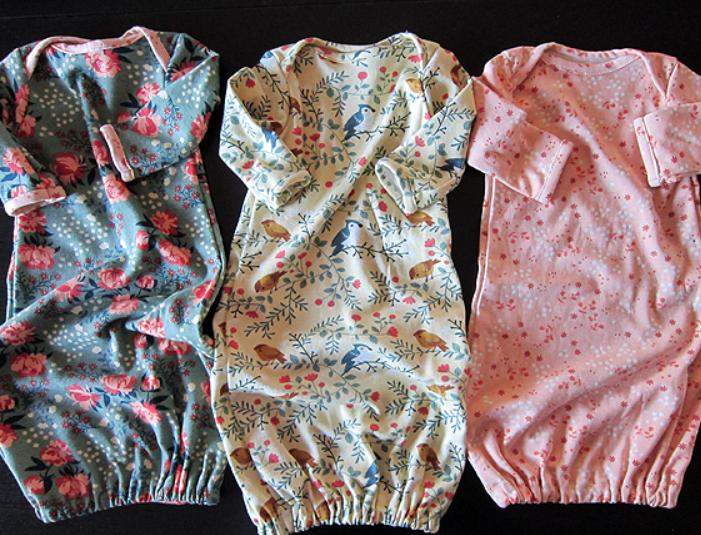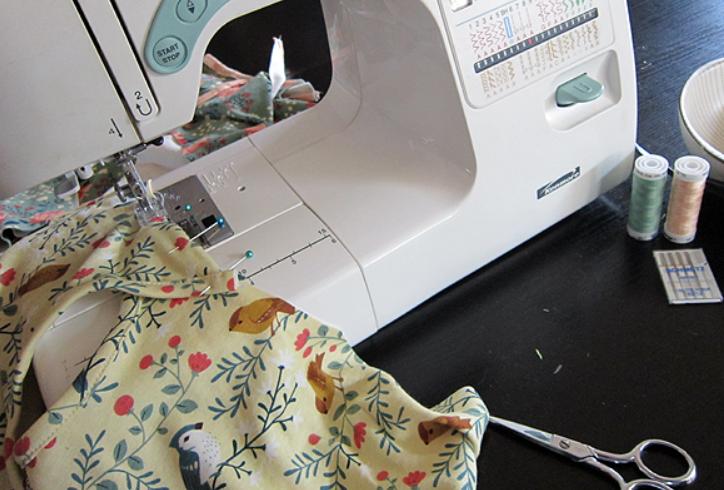Making baby clothes at home offers new moms a rewarding, budget-friendly way to dress their little ones in unique styles. Learning how to make baby clothes doesn’t require advanced skills, and with a few basic patterns, you can craft adorable and comfortable outfits for your baby. In this guide, we’ll walk you through each step, from choosing fabrics to selecting beginner-friendly patterns, so you can confidently create cute baby clothing pieces at home. Whether you’re new to sewing or just looking to start a DIY project, our easy-to-follow tips and insights on how to make baby clothes will help you get started right away.

What Supplies Do You Need to Make Baby Clothes?
Starting with the right supplies is essential to make your sewing journey enjoyable and smooth. Let’s go over the basics you’ll need to gather for this project.
First, you’ll want a few essential sewing tools: a reliable sewing machine, fabric scissors, pins, and measuring tape. For sewing notions, pick up some threads in matching colors, elastic bands for waistbands, and soft, baby-safe buttons if your patterns require them.
To complete your setup, select a few different types of fabric suitable for baby clothing—soft, breathable materials like cotton and organic bamboo are ideal. Having all these supplies ready will ensure you’re set to begin creating beautiful pieces for your baby with ease.
How to Choose the Right Fabric for Baby Clothes
Selecting the right fabric for baby clothes is crucial to ensure comfort and safety. Let’s explore the best choices for your DIY baby clothing.
Opt for fabrics that are soft, gentle on the skin, and breathable. Cotton, organic bamboo, and cotton blends are excellent choices, as they’re durable and easy to wash. Avoid fabrics with too much stretch for beginners, as they can be challenging to sew. When in doubt, look for lightweight fabrics labeled as “baby-safe,” ensuring they’re free from harsh chemicals and are soft to the touch. By choosing the right materials, you’ll create clothes that are both comfortable and safe for your baby to wear daily.
Step-by-Step Guide to Making Baby Clothes for Beginners
Follow this step-by-step guide to craft cute and functional baby clothes. Each step will provide you with the knowledge needed to create a well-made piece.
Step 1: Prepare Your Fabric and Tools
Start by setting up a clean, organized workspace with your sewing machine, scissors, pins, and thread. Pre-wash your fabric to remove any chemicals and prevent shrinking after the clothes are made. Once the fabric is dry, iron it smooth to make cutting easier. Measure and mark the fabric based on your baby’s size or the pattern’s recommended measurements. Use pins to hold the pattern in place as you cut, ensuring clean, precise lines.
Step 2: Cutting the Fabric
Carefully cut along the pattern edges, taking your time to ensure accuracy. If the pattern has multiple pieces, label each cut-out piece so you know where they go in the assembly process. Double-check that your cut-outs match the pattern’s measurements to avoid size issues. This step might seem tedious but is crucial to creating a professional-looking finish.
Step 3: Sewing the Pieces Together
Now that your fabric pieces are cut, it’s time to start sewing. Begin by pinning the pieces together at the edges where they’ll be joined, like the side seams and sleeves. Use a straight stitch for most seams, adjusting the stitch length as needed for thicker fabrics. Take your time, sewing slowly to avoid misalignment. Once the main seams are joined, reinforce any areas prone to stretching, like armholes and necklines, to keep the clothing sturdy.

Step 4: Adding Finishing Touches
After the main structure is complete, add finishing touches to the garment. Hem the sleeves and bottom edges for a clean look. If the design calls for it, attach any decorative elements such as pockets or small buttons. Remember, baby clothes should be simple and comfortable, so avoid embellishments that could be uncomfortable. Double-check for loose threads or rough edges that could irritate your baby’s skin.
Step 5: Final Checks and Adjustments
Give your baby clothes a final inspection. Check that all seams are secure, and trim any loose threads. Try the garment on your baby, if possible, or use measurements to ensure it fits comfortably. Make any final adjustments needed for comfort and practicality, such as adjusting the elastic in waistbands or resizing the cuffs. Congratulations, your baby’s new outfit is complete!
Quick DIY Baby Clothing Patterns for New Moms
If you’re looking for fast and easy patterns to get started, consider some popular DIY options. A basic onesie, elastic-waist pants, and simple baby hats are all excellent choices for beginners. Each of these patterns can be completed in under an hour with basic sewing skills and minimal materials. These quick patterns allow you to make versatile baby clothes without complicated techniques, making it easier to get comfortable with sewing.
Common Mistakes to Avoid When Making Baby Clothes
Learning to make baby clothes can come with a few challenges. Here are some common mistakes and tips to avoid them. First, avoid using fabrics that are too stretchy or slippery, as these can be difficult to work with. Stick to stable, woven fabrics when you’re just starting. Next, ensure you’re following the pattern’s instructions carefully, as skipping steps can lead to fit issues. Lastly, don’t overlook pre-washing your fabric—this helps avoid shrinkage after the first wash, ensuring the clothing fits well from the start.
Conclusion
Making baby clothes at home is a fulfilling way to create unique, comfortable outfits for your child. With simple patterns and the right materials, you can learn how to make baby clothes that suit your baby’s needs while also learning valuable sewing skills. Start with easy patterns, take your time, and enjoy the process as you create one-of-a-kind clothes for your little one.
FAQ
What are the best fabrics for baby clothes?
The best fabrics for baby clothes include cotton, organic bamboo, and cotton blends. These materials are soft, breathable, and gentle on a baby’s sensitive skin. Look for fabrics labeled as “baby-safe” to ensure they’re free from harsh chemicals.
How can I make baby clothes without a sewing machine?
You can make baby clothes by hand-sewing if you don’t have a sewing machine. Use a backstitch for durability and choose simple patterns like baby hats or pants, which require fewer seams. Hand-sewing may take longer, but it’s a great way to start sewing.
How do I find free baby clothes patterns?
You can find free baby clothes patterns on various sewing websites, blogs, and crafting communities. Websites like Pinterest and popular sewing blogs often offer printable patterns for onesies, hats, and other baby essentials. Look for patterns marked “beginner-friendly” to get started.
